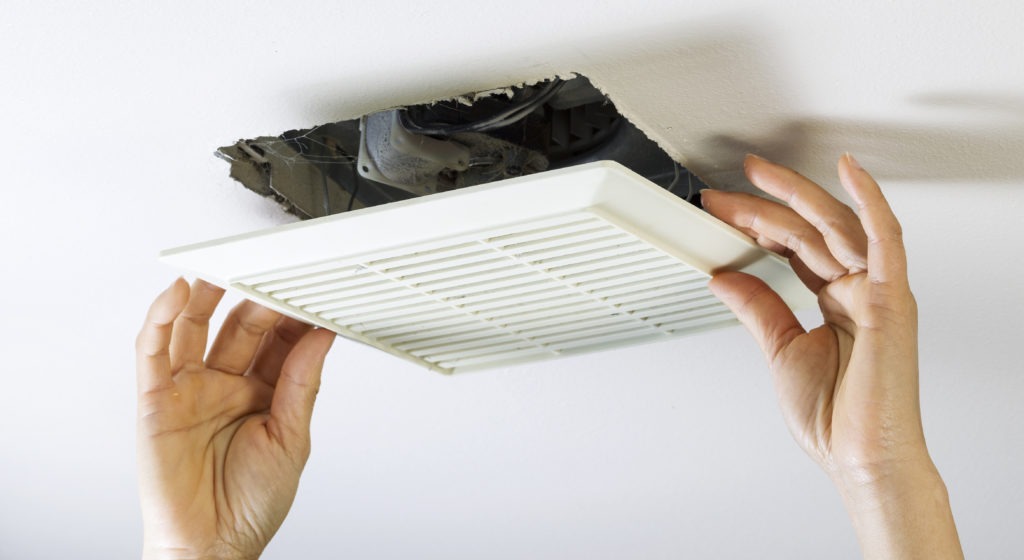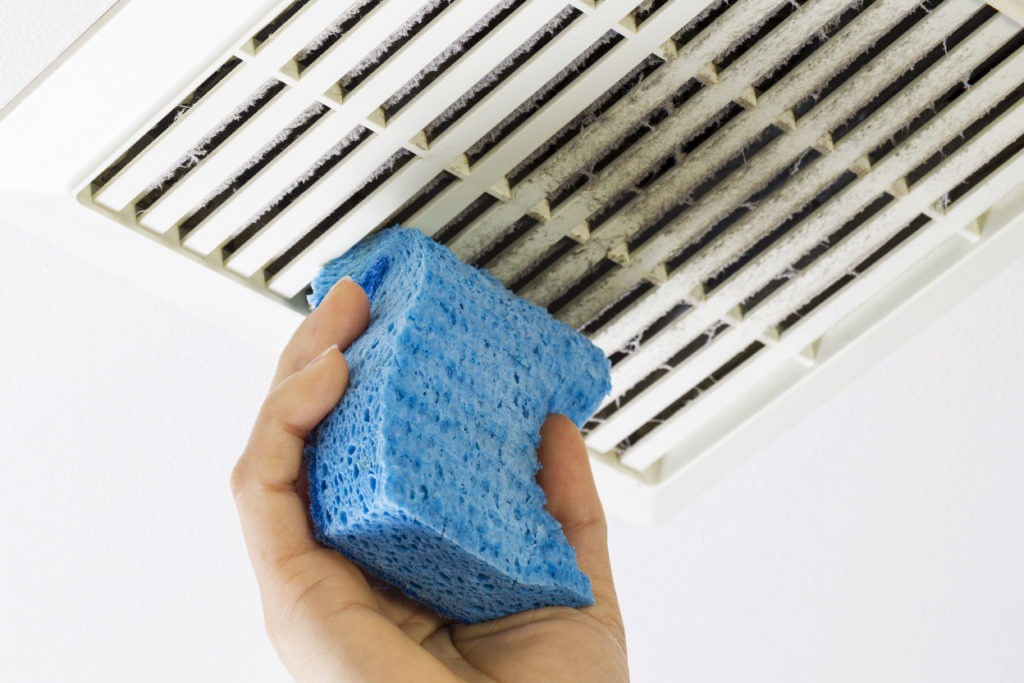Bathroom Ventilation 101

Out of all the rooms in your home, your bathroom holds the most moisture. Everyday personal care tasks completed in the shower and at the sink are centered on water. With all that water use, it’s easy to accumulate excess moisture in the air. And while a steamy shower may be the absolute best way to freshen up after a long day, but in a poorly ventilated bathroom, it’s the worst thing you can do for the room and your well being.
Mold and mildew thrive in warm, moist environments, making your bathroom an ideal home for them. Not only are mold and mildew hard to look at, both are harmful for you and your family’s health. The presence of indoor mold can impact homeowners, guests, and entire families. For some, nasal stuffiness and throat, eye, and skin irritation might be the most noticeable symptoms. But for others, like those with a compromised immune system or lung disease, symptoms can be way worse. The Institute of Medicine says exposure is directly linked to upper respiratory tract symptoms, cough, and wheeze in otherwise healthy people and an increase in asthmatic symptoms for those with asthma. But your humid bathroom alone can be enough to negatively impact your health, even without any mold or mildew. The Institute of Medicine also found out that exposure to damp indoor environments is linked to those same conditions. Not only that, when moisture is continuously present, your bathroom materials – from the floor to the walls – will be damaged. All that dampness will do will create even more moisture and greater damage, as these pieces like toilets and faucets are prone to leaking when loose.
So yes, it’s kind of a big deal.

Rather than spending time cleaning or fixing issues regularly, target the root of the problem. You’ll prevent damage on your bathroom and your body. Assess whether your home currently has enough ventilation.
More often than not, a bathroom’s ventilation system will include a fan that pulls air and moisture out of the bathroom. Exhaust fans are critical in places like the bathroom. These smaller units are often mounted in ceilings or walls. Do you have one? If so, look for any dysfunctions or blocks in your current system. Be sure to verify that your fan expels air outside or through ventilation pipes. This is especially important if you live in an older home, which might have been built before certain standards were set in place. If your humid bathroom air is being pushed into an attic, you’re just moving the problem to another part of your home.
If you find yourself in this situation or without a fan at all, it may be time for a bathroom renovation with the help of a trained contractor. He or she will assess the installation requirements for a new system or check to ensure your vent is the proper size for your bathroom, will search your attic for any mold, rotting boards or other signs of moisture damage from a vent, and search your roof dips, damage, or obstructions that might hinder ventilation.
Once you do have a new and improved ventilation system installed, make sure to actually use it. Fans should be used throughout any bathroom use and left on for at least 20 minutes, especially after anyone takes a shower or bath. With regular use, you’ll see and feel the difference ventilation can make for your home’s humidity levels and family’s health.
*Consider opening your window every time you shower to keep potential mold and mildew growth at bay in the meantime.
_____________________________________________________________________
If you have any additional questions during your search for the perfect copper, fireclay farmhouse sink or granite sink, our Sinkologists are here to help. Contact us or follow us on Facebook, Houzz, Pinterest, or Instagram for more helpful tips and design ideas.